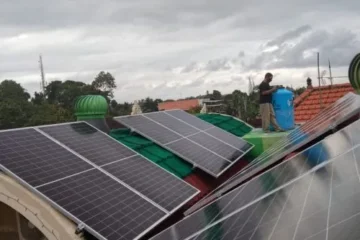Cutting-Edge Laboratory Heat Sealer for Superior Sample Protection

Heat Sealer is a consistent tool used to perform sealing on flexible packaging products and other thermoplastic materials using pressure and heat by maintaining high temperatures. Effective Lab Heat Sealer is manufactured under various Test Standards such as ASTM F 2029.
A small, adaptable tool for safely sealing a variety of plastic bags, packing materials, and pouches used in laboratory environments is the Effective Lab India, laboratory heat sealer. With the use of regulated heat, this apparatus fuses or welds the thermoplastic material of the bag to produce an enduring and airtight seal. A heat sealer is an equipment which is used for sealing products, packings, and thermoplastic materials samples. This machine seals the product by using heat.
This can occur with materials having multiple layers, one of which is thermoplastic, or with homogeneous thermoplastic monolayers. Heat sealing machines can be used to fuse dissimilar materials, or to fuse two materials that are similar.
There is a direct contact method of heat sealing in which a constant heating bar is used to heat the specific material.
Applications of Laboratory Heat Sealer
Heat sealing machines have several applications which include: thermally activated adhesives, heat seal connectors, and plastic ports. In many consumer electronics, heat seal connectors can be used to join LCDs to PCBs. Also, it is used in telecommunication and medical devices. It is frequently used in scientific research, medical laboratories, and other settings where it is essential to maintain sample integrity and avoid contamination. By preserving the integrity of samples and reagents, the heat sealer guarantees a prompt, effective, and reliable sealing procedure, which enhances the accuracy and dependability of experimental results. When heat staking or ultrasonic welding is not an option due to part design requirements or other assembly considerations, heat sealing of products using thermal adhesives is used to hold clear display screens onto consumer electronics products and for other sealed thermo-plastic assemblies or devices. Heatseal equipment can also be used in the filter media manufacturing and blood test film for the blood. Moreover, in today’s medicine, viruses and some other test strips are used. Films and laminate foils are mostly sealed with heat. Also, in medical wards; bottles, containers and plates are sealed with heat sealing to prevent contamination. Moreover, in the plastic industry, heat sealer machine for plastic packaging is used. Also, plastic bags and other packaging products are often formed by a heat seal. Fluid bags used in food, medical and bioengineering industries are also sealed with the help of a heat-sealing machine.Seal Strength Testing with Laboratory Heat Sealer
The detailed efficiency of heat sealers is determined by their contracts, specifications, and regulations. Sometimes, periodic subjective evaluations are asked by the quality management system. For example, a straightforward pull can be used to assess certain seals to identify the failure mechanism and the presence of a bond. Polarized light can be used to better observe certain plastic films by highlighting the heat seal’s birefringence. On the other hand, seals of sensitive products require thorough protocols of verification and validation. These protocols might use quantitative testing. The testing methods include:- Seal strength per ASTM F88 and F2824
- Burst and Creep per ASTM F1140 and F2054
- Vacuum Dye per ASTM D3078
Leave a reply
You must be logged in to post a comment.







